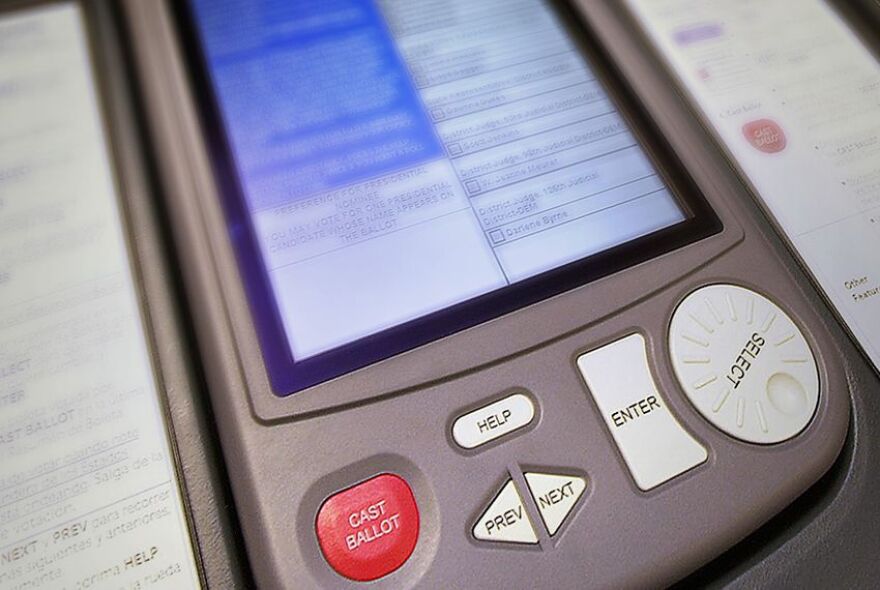Hey, Texplainer: I’m hearing reports of voting machines changing the selections of some straight-ticket voters. What gives?
Voters from around the state have reported a curious thing happening at the polls this week: They meant to vote straight-ticket but when they reviewed their final list of selected candidates, someone from an opposing party was picked instead.
Some people wondered if there was malfeasance. Others blamed malfunctioning voting machines. And both Democrats and Republicans have tried to warn voters in their respective parties.
🚨 ALERT: We have received multiple reports from voters who voted straight-ticket, then saw on a later screen that their votes were changed to that of the opposite party. You must check your ballot before casting to ensure it’s correct, and you can ask a poll worker for help.
— Texas Civil Rights Project (@TXCivilRights) October 25, 2018
But according to the Texas Secretary of State’s Office, the voting machines are not at fault. Rather, the problems reported are the result of “voters hitting a button or using the selection wheel before the screen is finished rendering,” which de-selects the pre-filled candidate selection.
“The issue is occurring primarily with the U.S. Senate race selections, because it is at the top of the ballot,” said Sam Taylor, a spokesman for the secretary of state.
The problem is happening with Hart eSlate voting machines, which are used in 82 of Texas’ 254 counties. Around 7.2 million registered voters live in those counties, which account for 46 percent of registered voters in the entire state. And three of the five counties with the most registered voters, Harris, Tarrant and Travis, use them. Hart InterCivic eSlate did not respond to a request for comment.
So what should you do if you’re in one of those counties? Easy. Double-check all your votes before submitting your ballot.
According to the secretary of state’s office, Hart eSlate voting machines have an “enter” button and a selection wheel to help voters select their choice candidate. The office advises voters to use one button at a time and to not hit the “enter” button or use the selection wheel until the page is fully rendered.
“If Texans are having issues, they should ask a poll worker for assistance immediately, and do not cast their ballot before carefully reviewing the summary screen at the end to ensure all their selections are listed correctly,” Taylor told The Texas Tribune in an emailed statement.
The secretary of state’s office has no legal authority to force any vendors to make upgrades if their voting systems are otherwise in compliance with federal and state law. Counties are also responsible for purchasing their own voting equipment. Hart eSlate’s systems were certified in 2009, according to The Associated Press.
It’s worth noting, however, that straight-ticket voting won’t be around for much longer. Last year, Gov. Greg. Abbott signed a bill into law that will eliminate the “one punch” voting option from Texas ballots starting in 2020.
Early voting ends of Nov. 2. Election Day is on Nov. 6.
The bottom line: Voting machines aren’t malfunctioning. The secretary of state’s office is advising Texans to check their ballots and to double-check all votes cast before submitting their final ballot.
Chris Essig contributed to this report.
This article originally appeared in The Texas Tribune


